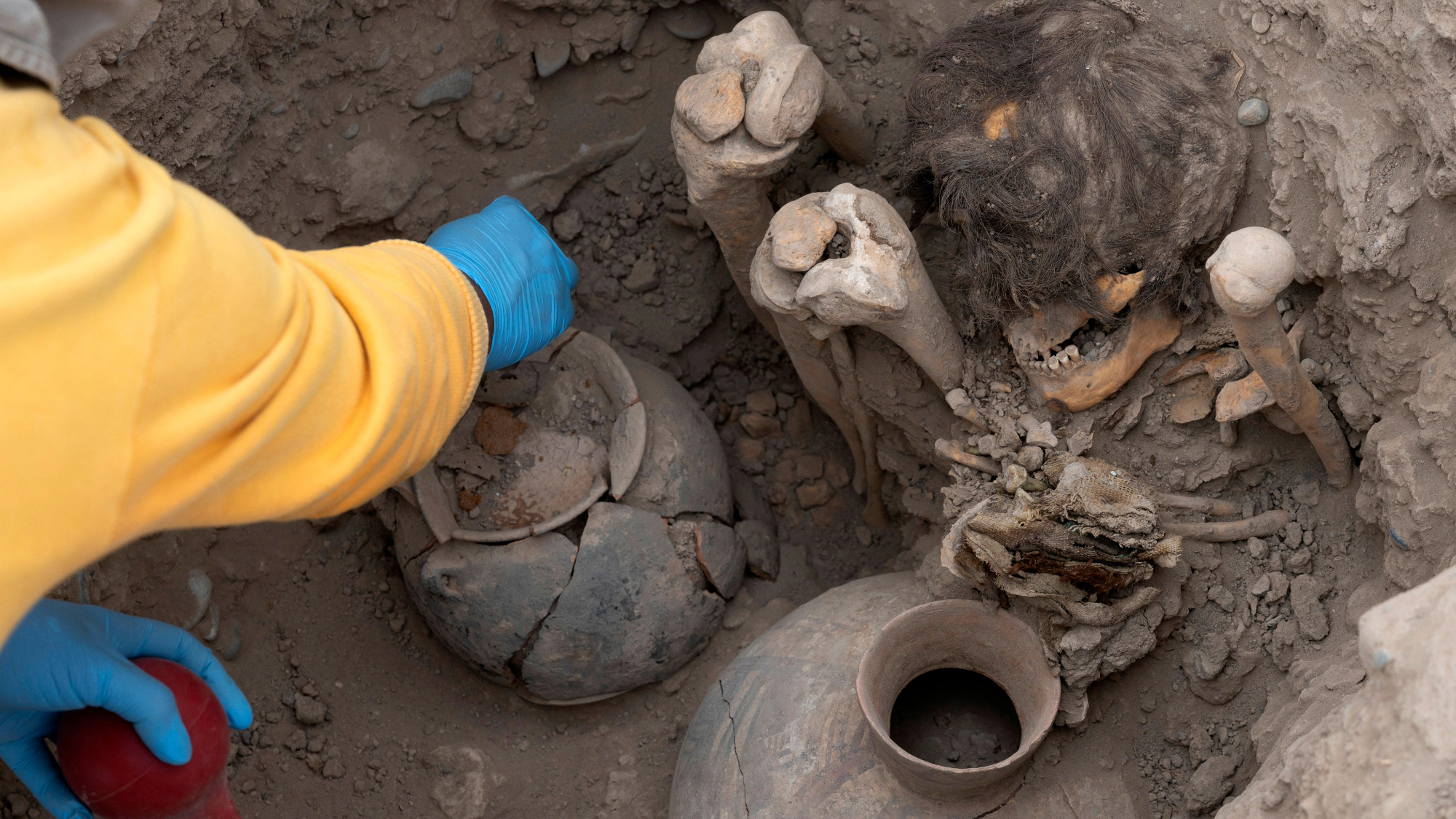

A team of archaeologists have unearthed a roughly 1,000 year-old mummy with well-preserved brown hair in Peru’s capital city of Lima. The mummified remains were found alongside preserved textiles, ceramic vessels, and other objects at the Huaca Pucllana monument, a 82-foot tall clay pyramid with an archaeological site hidden inside of a ceremonial grave.
[Related: Machu Picchu was home to ancient people from all over South America.]
“This is an adult individual in a sitting position with bent legs,” head archaeologist Mirella Ganoza told Reuters. Ganoza noted that the mummy’s long hair and jaw were both nearly completely intact, but the sex of the individual is still unknown.
Archaeologists have found other mummies and ancient offerings at the Huaca Pucllana site before. But there is still more to be uncovered, according to the team. Lima itself is home to about 400 sacred sites, with numerous archaeological ruins and mummies. Years of finds have been used to analyze the cultural, health, and social conditions of Indigenous Peruvians. In April, another 1,000 year old mummy was found about 15 miles from Lima at the Cajamarquilla archaeological site. Those remains were believed to be from an adolescent and some of the corpse’s skin was still distinguishable. It was found burried with at least 20 other individuals who are thought to be victims of human sacrifice.
Long before the Incas built their mountaintop royal retreat Machu Picchu or Spanish colonizers first arrived around 1527, Peru was home to multiple thriving pre-Hispanic cultures, including the Ychsma people. Huaca Pucllana was built by the Ychsma around 500 CE and is the heart of present-day Lima’s Miraflores district. It’s believed that the Ychsma used it as a cemetery. The Ychsma people are credited with building at least 16 pyramids, some of which are older than Egypt’s pyramids by about 4,000 years. The irrigation experts dominated the central coast of Peru until it was absorbed by the Inca empire around roughly 1468. The mummified remains themselves can be traced back about 1000 CE.
[Related: Scientists use AI to help uncover elusive Nazca lines.]
“I find it quite interesting that right in the heart of Miraflores, in the middle of the city, surrounded by modern buildings and constructions, an important site is still preserved, the Huaca Pucllana ceremonial center,” Ganoza told Reuters.
Earlier this year, researchers discovered a similar mummy believed to be close to 3,000 years old in Lima. This mummy’s skull also had intact hair that was found inside of a cotton bundle before the rest of the remains were uncovered. That mummy is believed to be from the Manchay culture, which developed between 1500 and 1000 BC in Lima’s valleys. The Manchay are associated with the construction of temples built in a U-shape that pointed toward the sunrise, according to Reuters.
